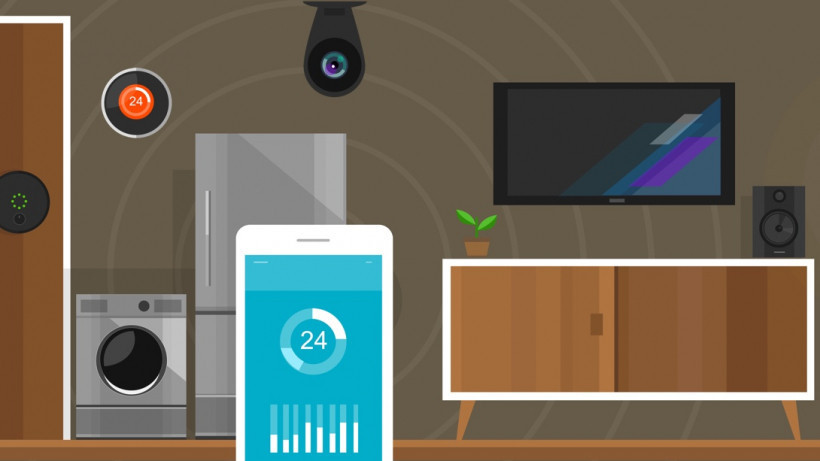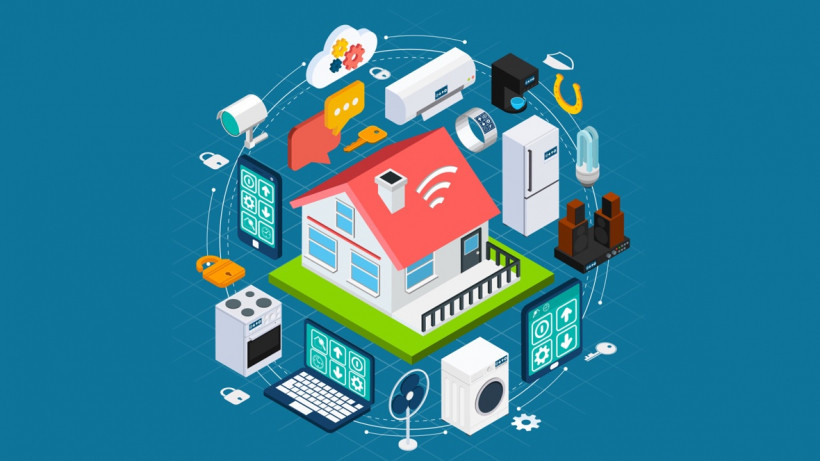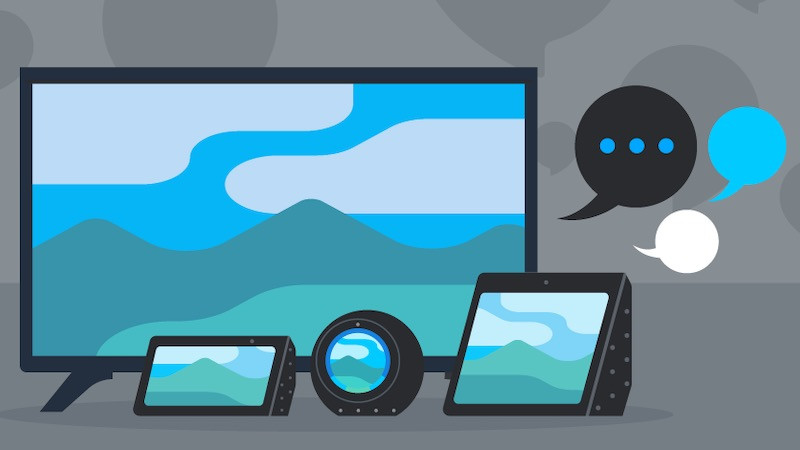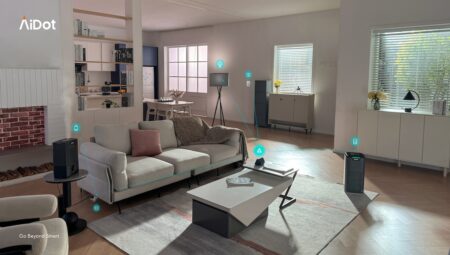Need a helping hand? Beginners, step right up
If you’ve landed on this page, it might be that you’re wondering what a smart home can do exactly. If you’re already a seasoned pro, you’ve come to the wrong place: this is our explainer on how to go about building a smart home from scratch, and all the things you’ll need to consider as you start.
A smart home doesn’t have to mean completely new and crazy gadgets or robots – though it can if you want. Often it just means replacing gadgets, appliances and accessories with connected or automated versions of a similar thing – smart light bulbs, smart thermostats, smart security systems and more.
But it also means making all of the tech in your home sing and dance in harmony, from the Wi-Fi signal, through the media you consume, right down to how plugs switch on and off.
Below, we’ll walk you through all the essentials – the what, the why, the how – and point you in the direction of some other guides that can help once you’re done grappling with the basics.
5 steps to creating your smart home
- Choose a system – whether that be Alexa, Google Assistant, HomeKit, SmartThings, or something else.
- Then pick a top smart speaker, smart home hub or smart display to be your main controller.
- Check what the best devices are in each smart home category.
- Start with the basics – lighting, heating, music – build your system around these.
- Get stuck into automations, routines and rules.
What is a smart home?
Connecting the tech in your home to your Wi-Fi network (and each other) has a few benefits. First among these are control and convenience. You can control everything in real time either from an app on your smartphone or tablet, or through a voice-controlled smart speaker.
We’ll get to those in a minute. A lot of smart home companies aim to make your life a little easier, or save you time on a regular basis; they’re trying to sell convenience.
Second, there’s information. The best smart home gadgets can give you easily accessible data on things like security – say, access to a history of smart security camera feeds.
Or, perhaps, energy – smart meters and energy monitors that tell you (and your utility provider) how much electricity and gas you’re getting through.
The third benefit is automation. If you don’t want to manually control your home gadgets all the time you can go one step further and set up scenes, routines and rules.
You can set up certain actions to happen after being triggered by things like you entering or leaving your home or sensors being activated. The idea is that your home gets to know you and your family/friends, and automatically works based on what’s happening, without the need for your input.
Lastly, well, we get to robots. This is only really a taster, but the next step up from lights that turn red when your smoke alarm goes off are autonomous gadgets that operate themselves.
We’re talking robot vacuums, robot lawn mowers and laundry-folding robots, all of which currently exist. This category generally still involves plenty of wishful thinking. Sadly, the smart home can’t do all of your household chores for you – yet.

The smart home: Where do you start?
The answer to the above question depends on three things: your budget, time and enthusiasm. Honestly, you could just buy one connected home gadget and get going with the individual brand’s app then work any additions out later. For the past five years or so that’s what plenty of people have been doing.
But if you have much bigger plans in mind, you will probably want to take the plunge with one of the big smart home ecosystems. Currently, those are:
So, how are you supposed to decide which smart home system is actually best for you?
Amazon’s devices are powered by Alexa, which lives inside its Echo speakers. Google’s series of devices is called Nest/Home and its assistant is called Assistant. Apple’s platform is called HomeKit, and its assistant is named Siri.
SmartThings is owned by Samsung but is a pretty open platform and Matter is an overriding system designed to get all of the others teamed up and playing nicely.
Confused? Don’t be, it’s all very simple.
Alexa and Google Assistant are both compatible with a huge range of other smart home gadgets and appliances, and are very beginner-friendly too.
Both also offer their assistants on third party speakers from brands like Sonos, Sony, JBL, Lenovo and more, and both offer devices with screens – Amazon has a few versions of the Echo Show, while Google’s smart displays are also growing in number, with the Nest Hub Max leading the way.
Apple HomeKit is the obvious choice for Apple loyalists. You will be able to control everything from the Apple Home app for iOS, an Apple TV box or the Apple HomePod or HomePod Mini smart speakers, with their own voice assistant, Siri.
Apple’s weakness was that was trailing far behind the other two in terms of the number of devices supported. However, if you’re privacy-conscious then it was a better choice, as Apple is still much better about protecting personal data that it captures.
However, whether you choose Amazon, Apple, Google or even Samsung SmartThings, everything is much easier to setup and control these days thanks to many smart home devices being Matter compatible.
We won’t get too bogged down with what exactly Matter is – you can read our comprehensive Matter smart home explainer for more on that – but just know that it’s now easier than ever to mix and match smart home systems and brands in the same household.

How to build your smart home system
Okay, so you’ve chosen your smart home hub or controller – what’s next? A good way to think about building your system is to pick a home category then look around for products that work with the ecosystem you’ve chosen.
The most popular categories in the smart home right now are kitchen appliances, baby monitors, cameras, doorbells, garden, lighting, networking, security systems, speakers and thermostats. So a good move is to dig into one of those, see what looks like a good fit using our buyers guides:
- Best smart light bulb buying guide
- Best smart thermostat buying guide
- Best smart speakers buying guide
- Best smart security camera buying guide
- Best smart video doorbell buying guide
- Best smart TV buying guide
- Best smart lock buying guide
- Best multi room speakers buying guide
- Best robot vacuum cleaner buying guide
- Best smart baby monitor buying guide
But if you’ve chosen an ecosystem you can use our guides to find what devices are compatible. We’ve got dedicated pages covering what smart home devices work with Alexa, which will also give you some inspiration if you’re taking the plunge with an Echo speaker. We’ve also got features on what smart home devices work with Google Assistant, and Apple HomeKit-compatible devices.
While these are the best-known platforms, there are still other ecosystems of devices – Samsung SmartThings is another big one, and a good choice for anyone who wants a bit more flexibility.
And, if one device in your home doesn’t quite play nice with another, or you end up with with a mixture of compatible products, look into a smart home hub or an app-based hub like IFTTT or Yonomi.
These are free platforms that are very handy for setting up automation scenes and for plugging the gaps while manufacturers get their act together and make everything work with everything.
Again though, with the launch of Matter, everything is much easier than it was a few years ago and you won’t need to worry about things like “What is Zigbee?” and “What is Z-Wave?“

How to get your smart home talking
Once you’ve started finding pieces for your new smart home, you might be wondering how to actually set everything up and make sure it’s all working smoothly. We periodically put together guides for all the latest smart home features. We also regularly keep our existing how-tos fresh and updated.
You can see them all in our dedicated How To section.
However, if you’re looking for a quick dose of some of the essentials, here are a handful of how-tos that’ll quickly get you acclimated.
- How to set up an Alexa smart home
- How to create household profiles for Alexa
- How to connect Spotify with Alexa
- How to set up Alexa Routines
- How to add and control devices with Google Assistant
- How to set up an Apple HomeKit hub
- How to play music on Google Home
And once you’ve mastered the basics…
Once you’ve got a hand on the basics, bagged yourself some smart home gear and pledged your allegiance to one or more platforms, things really start to get fun. Here are some more guides to dig your teeth into…
- Ingenious uses for smart plugs
- How to make better use of the smart sensors in your home
- The best Philips Hue apps
- The best Alexa skills
- The best Google Assistant commands

Smart home privacy explained
When it comes to privacy, there’s a lot to consider. We’ve got a full guide to smart home privacy that you should definitely check out if you want to know all the details, and how to pick the most private ecosystem.
The main thing to note when you start connecting your home is that you are sharing data about your home habits, and those of your family/flatmates/friends/pets, with tech companies big or small. There’s no getting around it entirely, although the way this data is handled will vary.
What the companies do with your data – which can include audio and video recordings from speakers and cameras – very much depends on their approach to making your information anonymous; their privacy policy, which you should try to skim through before you agree; and their business model. For instance, Amazon and Google make money from selling you things and advertising you things; Apple makes money selling hardware.
The tech company who makes the product or service you are using might also choose to share your data, for example with third-party app developers. Or they might explicitly state that this will be anonymous or they may never sell it.
However, when it come the big players, at least some privacy options are becoming more common, particularly around voice recordings. All of Siri, Google Assistant and Alexa offer voice commands to allow you to delete stored recordings of your voice, for example. To find out how to use these features, check out our guides:
- How to delete Google Assistant voice recordings
- How to delete Amazon Alexa voice recordings
- How to delete your Siri recordings from Apple’s servers
Despite these options, you might feel more comfortable limiting what information you give to smart home devices, and which rooms those devices are in.
You might also be happier sharing data with a smaller startup who is putting privacy first, compared to a large corporation. Until policy and laws change, it’s a decision for everyone to think about individually or as a household.
What about smart home security?
We’re not talking about tech that prevents burglaries – we’re referring to hackers breaking in via your smart devices, using them to spy on your home or, in some cases, steal identity or money. It may sound far-fetched, but it’s a real thing.
Often these hacks relate to the security of the Wi-Fi network the tech is connected to, so this is something to consider – steps you can take include making sure not to connect to public networks, and considering VPN (virtual private network) software.

Jargon busting
There’s a lot of technical language in the smart home world. Here are a few terms we think you might like explained, to get you started. Let us know in the comments if there’s anything else you’d like us to cover.
Actions – Pre-set series of smart home controls mapped to one voice command, delivered via Alexa or Google Assistant.
AirPlay – AirPlay is Apple’s protocol – a kind of gadget language – that allows you to transfer audio and video between devices using Wi-Fi.
Bluetooth LE – Another one of those protocols, Bluetooth LE connects devices which are near to each other (e.g. in the same room) once it is activated and they are paired, such as wearables and speakers. The LE stands for low energy as it requires very little power.
Controller – How you control your smart home devices. This could be a smartphone app, a voice-powered speaker or a universal remote control.
Geofencing – A virtual fence which can be used to let your devices know you’re close to home, walking in the front door or leaving. It uses GPS or RFID technologies to send an alert when a device, for example your smartphone, crosses a geographic boundary.
Group – When you collect devices together to control them as one group. For example, everything in the bedroom could be switched off with one action such as a voice command or swipe in a phone app.
Hub – This one is up for dispute but at its core a smart home hub connects various different devices, which might be compatible with different protocols, and gives you control over everything via one app, voice assistant or screen based system.
HVAC – Easy. Heating, ventilation and air conditioning.
Internet of Things – Also known as IOT, this is the concept of connecting objects to the internet, including smart home devices and sensors but also in industry, business and smart cities etc.
Matter – From the Connectivity Standards Alliance, which features a who’s who in the world of tech, is a new standard which is set to make the smart home easier than ever.
Multi-room audio – One speaker system which can play the same music, from your phone or another media source, in more than room. This used to require drilling and wiring but now works via your Wi-Fi network.
Scene (or Routine) – Getting into home automation, a scene allows you to send more than one command to more than one device. An easy example is a smart lighting scene could have one green, one purple and one yellow light but scenes can also be used across different categories such as ‘Home’, ‘Bed’ and ‘Holiday’. Sometimes has different names.
Sensor – A useful piece of the smart home puzzle, a smart sensor is anything which can detect or measure change in its surroundings. This could be movement as in a window sensor but also temperature, humidity, air quality, light and noise.
Smart display – This is basically a smart speaker but built around a display. The Echo Show ranged and Google Home Hub are smart displays. Confusingly, Google’s line of smart displays are branded Smart Displays, with capitalized S and D.
Thread – Thread is set to be one of the major smart home protocols for the future and is a major part Matter; an initiative to make the smart home easier for everyone, backed by the likes of Apple and Google.
Voice assistant – The proper name for Alexa or Google Assistant, which are basically interfaces you talk to, rather than use via a screen.
Zigbee and Z-Wave – Two popular smart home protocols. These are a mechanism for different tech devices to communicate, like speaking the same language. Zigbee is known for its speed and low energy use; Z-Wave for its mesh network which boosts Wi-Fi performance. Other protocols include Insteon, X10 and LightwaveRF.






